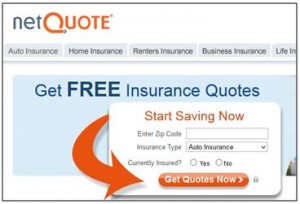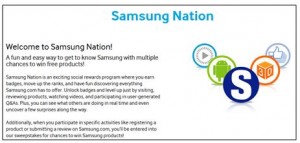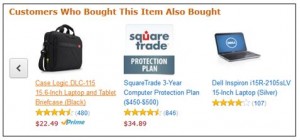Online businesses are eager to tell their brand narrative to any consumer that is willing to listen. Once a website has generated interest, companies want to continue to cultivate that relationship into action and ultimately convert the viewer into being a customer. While some actions are immediate (download, buy, or sign up), others many take more time, digestion and reflection.
Website engagement is usually defined as the process of having visitors seek out more information about your brand and show interest in becoming more vested in your product offering. The mirror of this relationship is that the brand is increasingly providing more valuable and interesting materials to visitors to develop and deepen the level of involvement with the brand.
On-site Engagement – What To Look For
Visitor’s Onsite Behavior
The term engagement is frequently used in digital marketing, and usually refers to how a visitor interacts with a brand across digital channels. For a brand, onsite engagement is measured by assessing the average visitor’s behavior on its website. In terms of on-site engagement, it’s important to consider the duration of time spent on each page, the consumer flow (entries and exits), how often the user revisits the site, and the depth of his or her visit (basically the number of pages they’ve visited).
Time on Page
This is a measurement of how much attention your page has earned from the audience. While marketers typically look for longer engagement, it depends on the site. In some cases, a long amount of time spent can be an indication of user satisfaction. Like David Marks, CEO of StumbleUpon, says “Time spend is not a very actionable metric, it’s more a sign that you’ve done the right thing.” Sites with clear calls-to-action (CTA) enable visitors to quickly click through to the next page, or move to the next step of the process and funnel. This metric is particularly helpful as companies make modifications to determine whether minor changes will impact whether visitors will linger on certain pages while speeding through others.
One example of a company that is interested in maintaining low times of on-site engagement is NetQuote. To date, it has over 25 million customers serviced and stands as one of the most trusted lead generation companies for online insurance. Even with all this success, NetQuote experienced low conversion rates on its landing pages- the first point of consumer contact.
After several attempts to improve and clarify the CTAs, NetQuote focused on reviewing the user experience and figuring out how to reduce the time spent on the initial point of contact. The company recognized that a core challenge was its inability to clearly and succinctly define its value proposition in comparison to competitors.
Seeking to increase the number of completed forms, and in turn lower the length of on-site engagement, NetQuote simply enhanced the initial ‘meeting’ point between the company and the user by adding animation that guided the user through the process.
Entry Paths
Understanding the paths and sources of various parts of site traffic offers companies valuable information about user activity. Reviewing the many entry paths that bring visitors to your site allows you to discern whether various entry points lead to different actions, and what service offerings are being highlighted to each user.
With an understanding of the metrics of the various entry paths (time on site, bounce rates, number of pages, etc.) you can strategize how to better serve those visitors. Should you add more videos or other forms of multimedia? Do you need to modify your CTAs?
Exit Points
While we don’t like admitting it, most sites are plagued by high bounce rates from visitor traffic. Exit points vary for every site, but generally, you should investigate what page or content caused you to lose your customers’ attention. This is one of the most telling measures and can be a critical factor in converting customers. If the desired action is not being taken, then the first question needs to be: Why not?
Now that we’ve nailed the basics, here are 17 things to help improve on-site engagement!
- Encourage Visitors to Join a Mailing List
Adding a mailing list option to your website is one of the simplest methods of reaching out to prospects. This strategy offers an incentive that encourages return visits and can enhance the relationship with the brand. Use a simple e-mail management system, such as MailChimp, and encourage visitors to join the e-mail list with a unique offering for those who sign up.
- Offer Fun and Shareable Content
Content pieces from a blog or other forms of content like videos or infographics should be easy to share. Use attractive and no-brainer social sharing buttons, such as the ones offered by ShareThis, for your micro-content. This will ultimately help increase the recognition of your brand’s website as one that offers valuable content.
- Ask for Feedback
Most sites forget that the customer is the most valuable resource in the conversion process. Every visitor can offer critical feedback and ideas on how to improve and refine your product. Encourage their input and feedback. Basically, just ask for that feedback. You can do it through a comments section in a blog, or through a chat system. Don’t be shy, and start asking your visitors what they think about your company and its service. The more a consumer is involved in the development of the product, the higher the rate of engagement and repeat business they will offer.
- Make Your Site Fun and Use Gamification
Beyond simply understanding the content on your site, many visitors are influenced by the level of enjoyment and interaction with the website itself. Using simple gaming tactics, like badges, tasks, or contests, can turn on-site navigation into a really engaging experience. Give it a try, and ask your users to “Find Coupon Codes” or “Discover 3 Secret Flowers Hidden on the Website.” A good example of this is Samsung Nation.
Samsung clearly understands the impact of social media and the influence of user-generated content. It rewards users for getting engaged with the Samsung community, participating in Q&A discussions with other users, watching product videos, and reviewing new products. In exchange for their participation, Samsung rewards its users with badges and progress charts as they gradually increase their levels of achievement. While Samsung benefits from substantial traffic, they focus on highlighting the benefits of getting involved with the global community as a means of encouraging user involvement.
- Implement User Generated Feedback
Every company should have data about its most valued customers. The ability to provide insight and voice their opinions serves as a source of pride to consumers. It also means that the company will save resources on test cases and focus groups. Leverage the most valued component of the business – your customers – and allow them to influence their future purchasing decisions.
- Feature a Voting System
Ask your visitors to rate or provide input on topics in a simple voting system. Encouraging them to choose between different options will provide you, once again, with valuable data at a fraction of the cost. Voting also uses game theory because people like to offer input and see if they are part of the ‘popular opinion’. If your polls are interesting, and the results are insightful, your audience will share them – which translates into more visitors. It’s time to get out the vote!
- Reward Brand Loyalists with Special Offers
Many sites are setting up cookie counters to recognize repeat visitors, and some even offer loyalty clubs. However, most sites are not using this repeat engagement as an opportunity to offer value and develop a relationship with visitors. Acknowledge a visitor’s loyalty – particularly after his or her 3rd visit, by offering a discount or opportunity to join (via a clear sign up form) a unique club will make brand loyalists out of all repeat visitors.
- Recommend Other Products or Content
Yes, Amazon has mastered the “You May Also Like This” feature. The fact is that companies can guide visitors to other content or products based on the cues they provide. Their actions and behaviors offer brands the ability to serve up more of the same content that the customer is already interested in.
- Crowdsource
Can you get your visitors to jointly create something for your business? A new logo? A new motto? This can be a fun and entertaining activity, and has worked for brands such as Doritos.
- Offer a Non-Promotional Giveaway
No, giveaways doesn’t always have to be directly related to your brand or service offering. Have you ever thought about giving away something that helps the visitor? How about a marketing ROI calculator? An SEO evaluator?
- Report Breaking News
Make your site a destination. Can you pull ideas and news from a variety of sources to your site and become a hub around your topic? This will help your website attract more visitors and teach you insights about which content is most compelling. The last resort is to offer general news updates like NewsTrust, but this may be too unrelated to the real intent of your visitors’ interests.
- Mix it Up with Multimedia
Can you let your visitors take your content with them? How difficult is it to repurpose your blogs into podcasts? This allows users to take your content with them on run, and ensures that you have content that matches the needs of each segmented audience in the marketing funnel.
- Speak with Your Users
Understanding the behavior, layout, content and calls-to-action of your website may not be easy for everyone. Consider adding some form of product video or on-site guidance to help users better navigate your site. For example, Toonimo helps companies engage with their users for even the most basic websites.
- Personalize the Website Experience
Set guidelines for engaging with your users at key points during their progression in the funnel. Make sure to engage them with the right reassurances and motivations to keep them going. It doesn’t hurt to tell them that you know they have been on site for a while, and even ask if they need any help or want to schedule a call.
- Talk About Your Customers or Prospects
If your clients have problems or challenges that are representative of your audience, creating a “before and after” case study that shows how your service helped them can offer website visitors much value. These types of case studies provide concrete facts and information and can really resonate with potential customers who are interested in solving similar problems. Test case scenarios also have a secondary benefit of positioning your brand as a thought leader and expert in your respective industry.
- Offer to Help Your Visitors
Be candid – share what value your company can provide to customers. If you are a media buying company, and know that your customers also need creative help, you can offer to make an introduction to experts or companies you know with that skill. It doesn’t hurt your business, and it will certainly make customers appreciate your efforts.
- Make Yourself Available
Visitors love to have a chance to “step up to microphone.” The bigger the company, the more people are interested in hearing what its team has to stay about strategic issues. By setting aside time, as little as half an hour per week, for the CEO or CMO to interact with the consumer, the company opens itself to candid dialogue and deep, meaningful relationships. Using social media channels such as Twitter chats or Google hangouts can offer significant community building opportunities with minimal investment of company resources. Clearly, this open style of communication can help strengthen a customer’s relationship with a brand.
- Experiment with Different Methods
It’s imperative to start testing different techniques for engaging website visitors. No site can possibly engage all of its users, but through testing, you can try out different best practices to see what captures the attention of your visitors and understand how to move them farther down the conversion funnel.
Choose one or two experiments to run this week and set them up with the corresponding measures. Then, let us know in the comments below what worked best for you!




